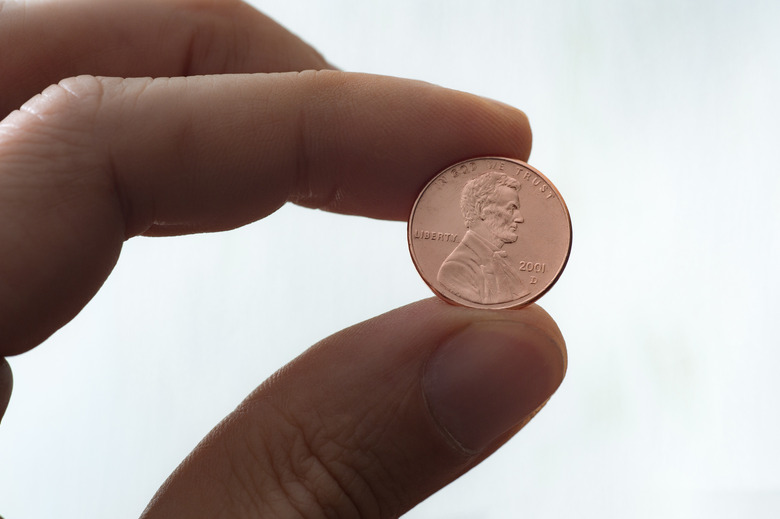Experiments With Salt And Vinegar
Experiments with salt and vinegar are inexpensive. Using these experiments to entertain and teach children provides a visual avenue into chemistry. Experiments with salt and vinegar are simple to do and can capture a child's attention. Chemistry lessons are explained, and the hands-on approach uses more of a child's senses than just hearing. The lesson will be more memorable with the addition of touch, smell and taste.
Shine a Copper Penny
Shine a Copper Penny
The combination of salt and vinegar creates sodium acetate and hydrogen chloride. This chemical reaction will take an old penny and shine it like new. Mix a 1/4 cup of white vinegar and one teaspoon of salt in a non-metalic bowl. Once the salt is melted and absorbed into the vinegar, dip the penny in the solution for 60 seconds. Rub the penny clean with a soft cloth. If water is introduced to the mix or the penny is left soaking in the salt/vinegar solution, it will corrode quickly and turn green.
Salt and Vinegar Crystals
Salt and Vinegar Crystals
Add 1/4 cup of salt to 1 cup of boiling water and 2 tablespoons of vinegar. Place a sponge on a dish and dot it with various drops of food coloring. Pour the salt mixture over the sponge until it is saturated and place it in a sunny window. Crystals will begin to grow within 24 hours. Continue adding the salt mixture to the sponge, and the crystals will grow in the various colors.
Verdigris
Verdigris
The green patina that is seen on old copper domes is a chemical result of water, salt and acid. Oftentimes a copper ring will even leave a green mark on a person's hand. This green material is called verdigris. It was used years ago as pigment in green paint. For this experiment, take some copper wire and place it on a plate. Sprinkle the wire with a mixture of a 1/4 cup red wine vinegar and a teaspoon of salt. Leave the wire alone for about 24 hours. The green patina and green crystals, or verdigris, will form on the wire.
Hidden Salt Crystals
In a half jar of cold water, pour 1/4 cup of salt, 1/4 cup of pepper and 2 tablespoons of vinegar. Stir the mixture together and place a teaspoon under a microscope. The pepper is easily visible to the naked eye, but with a microscope of at least 30X, the salt crystals are visible as well.
Cite This Article
MLA
Saltsman, Mitzi. "Experiments With Salt And Vinegar" sciencing.com, https://www.sciencing.com/experiments-salt-vinegar-8322822/. 13 March 2018.
APA
Saltsman, Mitzi. (2018, March 13). Experiments With Salt And Vinegar. sciencing.com. Retrieved from https://www.sciencing.com/experiments-salt-vinegar-8322822/
Chicago
Saltsman, Mitzi. Experiments With Salt And Vinegar last modified August 30, 2022. https://www.sciencing.com/experiments-salt-vinegar-8322822/
